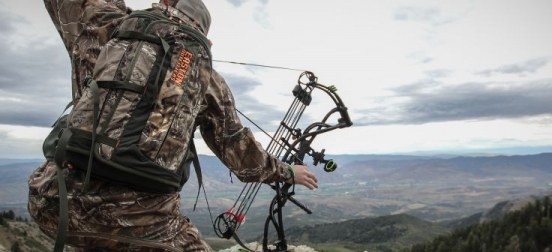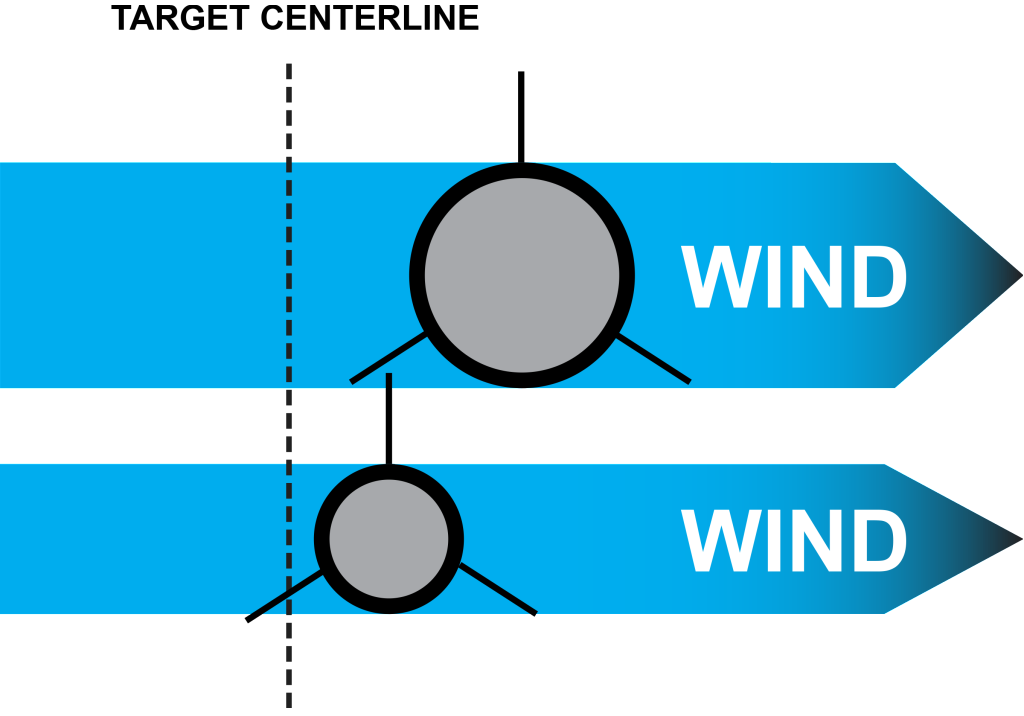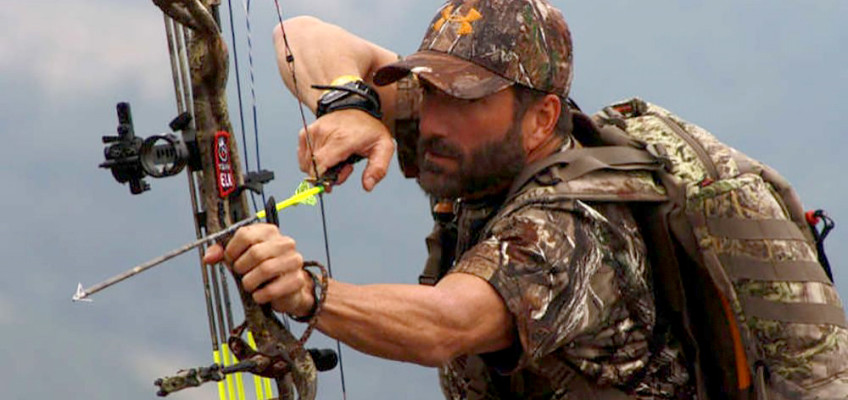Don’t call micro-diameter arrows the latest bowhunting fad. They’re not, and here’s why…
by the HuntDaily staff
Archery is not unlike every other outdoor pursuit. Manufacturers and marketers are always trying to invent the better mousetrap, claiming that this new technology or that unique variation of a time-proven piece of equipment will outperform everything that’s come before it. Sometimes the claims turn out to be true. Often as not, it only amounts to wishful thinking.
One area that has been a source of heated discussion within bowhunting circles for years concerns arrows—specifically, using small, “micro-diameter” shafts for hunting. The rub usually comes down to one of two lines of thinking: 1) the often heavier small-diameter shafts are great because they deliver superior downrange kinetic energy and penetration when compared to larger, usually lighter shafts; or, 2) the heavier small-diameter shafts—especially when using inserts for forward-of-center balance—are too heavy and don’t shoot with an acceptably “flat” trajectory.
Like most benchtop races, the debate over micro- vs. standard-size hunting arrows is fraught with erroneous assumptions and poor anecdotal evidence.

Recently, we participated in a roundtable event that offered us the inside scoop on micro-diameter hunting shafts from the world’s leading arrow manufacturer, Easton. We hadn’t set out to have this discussion, but casual talk of elk hunting led to talk of equipment and before we knew it Easton’s director of marketing, Gary Cornum, had us in the weeds, discussing trajectory, velocity, friction coefficient, and kinetic energy. Several times during our conversation, we weren’t sure whether to break out a scientific calculator or simply run away.
One of the benefits of getting educated by a company like Easton is the ability to cut through the speculation and look at facts. Easton brings to its knowledge base nearly a century of arrow manufacturing experience, as well as field experience in the form of professional hunters, field staff, and international competitive archers—in short, the world’s best from the bowhunting and target archery landscape.
What brought us to this discussion of small-diameter shafts was a friend who was looking to maximize long-range lethality. He hunts elk every year in Idaho and Wyoming, as well as mule deer in South Dakota. The open country sometimes means the only available shots can range out to 60, even 80 yards. It’s a distance he can accurately shoot and regularly practices for, but the weak link often comes down to the arrow shaft. Will it drift too much? Will there be enough energy for good penetration?
This is where Easton’s line of reduced, micro, and ultra-micro diameter bowhunting shafts come into focus. The standard carbon arrow today has a diameter of around 6.5mm. Easton necks its carbon arrows down even further with the reduced diameter 6mm Carbon Bloodline and 6mm FMJ models (new for 2016), and the micro 5mm Carbon AXIS and 5mm FMJ models.

In addition to these arrows, Easton also offers several models in the micro and ultra-micro diameter categories, such as the 4mm Carbon Injexion and the 4mm FMJ Injexion. These are small-diameter by anyone’s definition, and they represent a crossover concept from lessons learned from Easton’s competitive archery efforts.

Wind Drift
In outdoor field archery competition, shooters want the smallest possible diameter shaft they can get. The reason is that the small profile significantly reduces the effect of wind drift (crosswind that pushes the shaft horizontally left or right). Indoor shooters, by contrast, want the largest diameter arrow they can get away with because wind drift is not a factor, and the larger arrow increases the odds of breaking the next highest scoring ring.
For bowhunting open-range species where shot opportunities can exceed 30 or 40 yards, wind drift can be a major factor. By using a small-diameter shaft, the bowhunter minimizes crosswind impact (wind drift) and increases the arrow’s ability to hit the intended target.
What does this mean in the real world? If you’re shooting at a whitetail that’s 50 yards out and there’s a stiff breeze blowing across the cut field, that small-diameter shaft can mean the difference between putting an arrow through the boilermaker or into the dirt.
Velocity Maintenance
Lateral wind friction isn’t the only thing that influences an arrow’s flight dynamics. Atmospheric friction also has a part in how well an arrow cuts through the distance between you and your target. The more surface area an arrow has, the greater the air friction on the arrow. This friction reduces the arrow’s velocity (speed), resulting in reduced downrange kinetic energy.
As with crosswind, a reduced shaft diameter allows an arrow to minimize atmospheric friction and retain more velocity at longer distances than a larger shaft. The big benefit of this is that a small-diameter shaft will thus retain more energy when it reaches the target and still deliver a relatively flat trajectory. The “why does that matter” is obvious: the more energy an arrow has when it reaches the target the harder it will hit. That means better penetration and increased pass-through potential for quicker, cleaner kills.
By itself, the retention of energy is argument enough in favor of small-diameter shafts, but there is an added bonus: a smaller diameter shaft has less surface area, which means there’s less drag on the arrow as it passes into and through an animal. Less drag going through skin and organs boosts your odds of obtaining a pass-through shot, which, again, translates to a quicker, cleaner kill with maximum blood loss and easier tracking.
The Long-Range Performers
So, the theory is sound and the anecdotal evidence bears out the performance value of small-diameter shafts—whether you’re shooting whitetails in close quarters or larger open-range game at distances that push the comfort zone for most shooters. The next question is, what type of small-diameter shaft is right for you? Fortunately, Easton offers a selection of arrows that cover most hunters’ bow setups and shooting preferences.

Our favorite of the litter is the 4mm FMJ Injexion because it has everything we want in a hunting shaft. This is a micro arrow with a scant 4mm diameter, so resistance to wind drift and atmospheric/target friction is maximized. And because this arrow has a relatively high GPI weight rating for its size, it delivers superior downrange kinetic energy potential (remember that KE is a result of mass and velocity). What’s more, the 4mm FMJ Injexion features a carbon core combined with a 7075 alloy metal jacket, giving it a straightness of +/- .002 inches. All of this combines to make the 4mm FMJ Injexion fast, hard-hitting, and exceptionally accurate.
Not to be outdone is the 4mm Carbon Injexion. Like the 4mm FMJ Injexion, the 4mm Carbon Injexion has a 4mm diameter, carbon/aluminum composite construction, and a +/- .002-inch straightness guarantee. The primary difference between this and the 4mm FMJ Injexion is a lighter GPI rating (10.2 vs. 11 GPI @ 330 shaft size).This is an ideal hunting shaft for those with blistering-fast bows who can really take advantage of the velocity variable in the KE equation.

The two arrows we like in the micro camp are the 5mm Carbon AXIS and the 5mm FMJ. The 5mm Carbon AXIS is a carbon-only shaft, while the 5mm FMJ is a carbon core/aluminum jacket composite shaft. Again, the 5mm FMJ boasts a slightly higher GPI than the 5mm Carbon AXIS (12.0 vs. 11.5 GPI @ 300 shaft size) for optimal downrange penetration, while the lighter 5mm Carbon AXIS delivers the hard hits from high-velocity bows.
As you can see, the small-diameter arrow discussion really presents no mysteries. Reduced wind drift, higher downrange velocities, good trajectory, superior penetration, and minimal pass-through friction all combine to ensure the most accurate and most lethal hunting arrow performance you can find. And that works whether you’re after big bucks in the green fields or chasing elk in the high and open country.
For more information on selecting small-diameter shafts for your particular setup, check out Easton’s detailed arrow selection chart.
SOURCE
Article copyright 2015 by HuntDaily.com; promoted by Easton Technical Products


Bggghj
80 yards and worried about wind drift. Awesome.